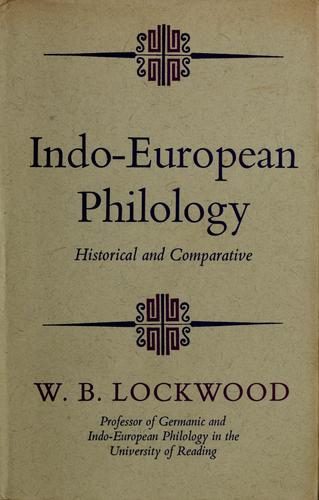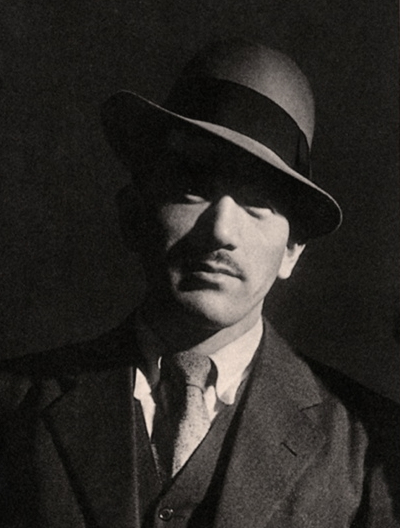|
Motoori Norinaga
was a Japanese people, Japanese scholar of active during the Edo period. He is conventionally ranked as one of the Four Great Men of Kokugaku (nativist) studies. Life Norinaga was born in what is now Matsusaka, Mie, Matsusaka in Ise Province (now part of Mie Prefecture). His ancestors were vassals of the Kitabatake clan in Ise Province for many generations. However, in the early Edo period they abandoned their samurai status, changing their surname to Ozu, and relocated to Matsusaka, where they became cotton wholesalers. The family initially prospered and had a store in Edo as well. (The film director Yasujirō Ozu was a descendant of the same line). After his elder brother's death, Norinaga succeeded to the Ozu line. At one stage he was adopted out to a paper-making family but the bookish boy was not suited to business. It was at his mother's suggestion that, at the age of 22, Norinaga went to Kyoto to study medicine. In Kyoto, he also studied Chinese and Japanese philology ... [...More Info...] [...Related Items...] OR: [Wikipedia] [Google] [Baidu] |
Self-portrait
Self-portraits are Portrait painting, portraits artists make of themselves. Although self-portraits have been made since the earliest times, the practice of self-portraiture only gaining momentum in the Early Renaissance in the mid-15th century that artists can be frequently identified depicting themselves as either the main subject, or as important characters in their work. With better and cheaper mirrors, and the advent of the panel painting, panel portrait, many painters, sculptors and printmakers tried some form of self-portraiture. ''Portrait of a Man in a Turban'' by Jan van Eyck of 1433 may well be the earliest known panel self-portrait. He painted a separate portrait of his wife, and he belonged to the social group that had begun to commission portraits, already more common among wealthy Netherlanders than south of the Alps. The genre is venerable, but not until the Renaissance, with increased wealth and interest in the individual as a subject, did it become truly popular. ... [...More Info...] [...Related Items...] OR: [Wikipedia] [Google] [Baidu] |
Four Great Men Of Kokugaku
The Four Great Men of Kokugaku (國學の四大人, ''Kokugaku no shitaijin'' or ''Kokugaku no shiushi'') are a group of Edo-period Japanese scholars recognized as the most significant figures in the Kokugaku tradition of Japanese philology, religious studies, and philosophy. They are traditionally enumerated as: * Kada no Azumamaro * Kamo no Mabuchi *Motoori Norinaga was a Japanese people, Japanese scholar of active during the Edo period. He is conventionally ranked as one of the Four Great Men of Kokugaku (nativist) studies. Life Norinaga was born in what is now Matsusaka, Mie, Matsusaka in Ise Province ... * Hirata Atsutane External links Japanese definition Quartets Japanese culture-relat ... [...More Info...] [...Related Items...] OR: [Wikipedia] [Google] [Baidu] |
Kojiki
The , also sometimes read as or , is an early Japanese chronicle of myths, legends, hymns, genealogies, oral traditions, and semi-historical accounts down to 641 concerning the origin of the Japanese archipelago, the , and the Japanese imperial line. It is claimed in its preface to have been composed by Ō no Yasumaro at the request of Empress Genmei in the early 8th century (711–712), and thus is usually considered to be the oldest extant literary work in Japan. The myths contained in the as well as the are part of the inspiration behind many practices and unified "Shinto orthodoxy". Later, they were incorporated into Shinto practices such as the purification ritual. Composition It is believed that the compilation of various genealogical and anecdotal histories of the imperial (Yamato) court and prominent clans began during the reigns of Emperors Keitai and Kinmei in the 6th century, with the first concerted effort at historical compilation of which we have record ... [...More Info...] [...Related Items...] OR: [Wikipedia] [Google] [Baidu] |
Nihon Shoki
The or , sometimes translated as ''The Chronicles of Japan'', is the second-oldest book of classical Japanese history. It is more elaborate and detailed than the , the oldest, and has proven to be an important tool for historians and archaeologists as it includes the most complete extant historical record of ancient Japan. The was finished in 720 under the editorial supervision of Prince Toneri with the assistance of Ō no Yasumaro and presented to Empress Genshō. The book is also a reflection of Chinese influence on Japanese civilization. In Japan, the Sinicized court wanted written history that could be compared with the annals of the Chinese. The begins with the Japanese creation myth, explaining the origin of the world and the first seven generations of divine beings (starting with Kuninotokotachi), and goes on with a number of myths as does the , but continues its account through to events of the 8th century. It is believed to record accurately the latter reig ... [...More Info...] [...Related Items...] OR: [Wikipedia] [Google] [Baidu] |
The Tale Of Genji
is a classic work of Japanese literature written by the noblewoman, poet, and lady-in-waiting Murasaki Shikibu around the peak of the Heian period, in the early 11th century. It is one of history's first novels, the first by a woman to have won global recognition, and in Japan today has a stature like that of Shakespeare in England. The work is a depiction of the lifestyles of high courtiers during the Heian period. It is written mostly in Japanese phonetic script (''hiragana''), in a vernacular style associated with women's writing of the time (not the same as "vernacular Japanese", which only appeared in late 19th century), not in Chinese characters (''kanji'') used for more prestigious literature, and its archaic language and poetic style require specialised study. The original manuscript no longer exists but there are more than 300 later manuscript copies of varying reliability. It was made in "Folded leaflet#Concertina fold, concertina" or style: several sheets of paper p ... [...More Info...] [...Related Items...] OR: [Wikipedia] [Google] [Baidu] |
Kokugaku
was an academic movement, a school of Japanese philology and philosophy originating during the Edo period. scholars worked to refocus Japanese scholarship away from the then-dominant study of Chinese, Confucian, and Buddhist texts in favor of research into the early Japanese classics. History What later became known as the tradition began in the 17th and 18th centuries as ''kogaku'' ("ancient studies"), ''wagaku'' ("Japanese studies") or ''inishie manabi'' ("antiquity studies"), a term favored by Motoori Norinaga and his school. Drawing heavily from Shinto and Japan's ancient literature, the school looked back to a golden age of culture and society. They drew upon ancient Japanese poetry, predating the rise of medieval Japan's feudal orders in the mid-twelfth century, and other cultural achievements to show the emotion of Japan. One famous emotion appealed to by the ''kokugakusha'' is ' mono no aware'. The word , coined to distinguish this school from ''kangaku'' ("Chin ... [...More Info...] [...Related Items...] OR: [Wikipedia] [Google] [Baidu] |
Neo-Confucianism
Neo-Confucianism (, often shortened to ''lǐxué'' 理學, literally "School of Principle") is a moral, ethical, and metaphysical Chinese philosophy influenced by Confucianism, which originated with Han Yu (768–824) and Li Ao (772–841) in the Tang dynasty, and became prominent during the Song and Ming dynasties under the formulations of Zhu Xi (1130–1200). After the Mongol conquest of China in the thirteenth century, Chinese scholars and officials restored and preserved neo-Confucianism as a way to safeguard the cultural heritage of China. Neo-Confucianism could have been an attempt to create a more rationalist and secular form of Confucianism by rejecting mystical elements of Taoism and Buddhism that had influenced Confucianism during and after the Han dynasty. Although the neo-Confucianists were critical of Taoism and Buddhism, the two did have an influence on the philosophy, and the neo-Confucianists borrowed terms and concepts. However, unlike the Buddhists and Tao ... [...More Info...] [...Related Items...] OR: [Wikipedia] [Google] [Baidu] |
Philology
Philology () is the study of language in Oral tradition, oral and writing, written historical sources. It is the intersection of textual criticism, literary criticism, history, and linguistics with strong ties to etymology. Philology is also defined as the study of literary texts and oral and written records, the establishment of their authentication, authenticity and their original form, and the determination of their meaning. A person who pursues this kind of study is known as a philologist. In older usage, especially British, philology is more general, covering comparative linguistics, comparative and historical linguistics. Classical philology studies classical languages. Classical philology principally originated from the Library of Pergamum and the Library of Alexandria around the fourth century BC, continued by Greeks and Romans throughout the Roman Empire, Roman and Byzantine Empire. It was eventually resumed by European scholars of the Renaissance humanism, Renaissance, ... [...More Info...] [...Related Items...] OR: [Wikipedia] [Google] [Baidu] |
Kyoto
Kyoto ( or ; Japanese language, Japanese: , ''Kyōto'' ), officially , is the capital city of Kyoto Prefecture in the Kansai region of Japan's largest and most populous island of Honshu. , the city had a population of 1.46 million, making it the List of cities in Japan, ninth-most populous city in Japan. More than half (56.8%) of Kyoto Prefecture's population resides in the city. The city is the cultural anchor of the substantially larger Greater Kyoto, a metropolitan statistical area (MSA) home to a census-estimated 3.8 million people. It is also part of the even larger Keihanshin, Keihanshin metropolitan area, along with Osaka and Kobe. Kyoto is one of the oldest municipalities in Japan, having been chosen in 794 as the new seat of Japan's imperial court by Emperor Kanmu. The original city, named Heian-kyō, was arranged in accordance with traditional Chinese feng shui following the model of the ancient Chinese capitals of Chang'an and Luoyang. The emperors of Japan ruled fro ... [...More Info...] [...Related Items...] OR: [Wikipedia] [Google] [Baidu] |
Yasujirō Ozu
was a Japanese filmmaker. He began his career during the era of silent films, and his last films were made in colour in the early 1960s. Ozu first made a number of short comedies, before turning to more serious themes in the 1930s. The most prominent themes of Ozu's work are family and marriage, and especially the relationships between generations. His most widely beloved films include ''Late Spring'' (1949), ''Tokyo Story'' (1953) and ''An Autumn Afternoon'' (1962). Widely regarded as one of the world's greatest and most influential filmmakers, Ozu's work has continued to receive acclaim since his death. In the 2012 ''Sight & Sound'' poll, Ozu's ''Tokyo Story'' was voted the third-greatest film of all time by critics world-wide. In the same poll, ''Tokyo Story'' was voted the greatest film of all time by 358 directors and film-makers world-wide. Biography Early life Ozu was born in the Fukagawa, Tokyo, Fukagawa district of Tokyo City, Tokyo, the second son of merchant Torano ... [...More Info...] [...Related Items...] OR: [Wikipedia] [Google] [Baidu] |
Samurai
The samurai () were members of the warrior class in Japan. They were originally provincial warriors who came from wealthy landowning families who could afford to train their men to be mounted archers. In the 8th century AD, the imperial court downsized the national army and delegated the security of the countryside to these privately trained warriors. Eventually the samurai clans grew so powerful that they became the ''de facto'' rulers of the country. In the aftermath of the Gempei War (1180-1185), Japan formally passed into military rule with the founding of the first shogunate. The status of samurai became heredity by the mid-eleventh century. By the start of the Edo period, the shogun had disbanded the warrior-monk orders and peasant conscript system, leaving the samurai as the only men in the country permitted to carry weapons at all times. Because the Edo period was a time of peace, many samurai neglected their warrior training and focused on peacetime activities such as a ... [...More Info...] [...Related Items...] OR: [Wikipedia] [Google] [Baidu] |









